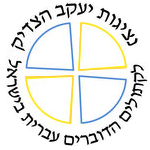Reflecting on Purim and on Lent
![]()
What does Purim have to do with us Christians? On Purim it is carnival and drunkenness while we are deep in Lent! What could there be in common? Before answering with absolute certainty: “absolutely nothing,” please take the time to read this article right until the end and then perhaps you might give a less categorical answer. This will be true especially if we do not only see Purim as carnival even if carnival is also an interesting phenomenon, found in different forms in many diverse periods and cultures. There seems to exist within the human person a kind of psychological need to dress up in disguise as someone or something else thus revealing that which he or she has within or unmasking hidden aspirations. In this manner, incognito, he or she can do what they might not dare to do in ordinary circumstances (and not always something reprehensible).
In fact, most of us are disguised daily. Our choice of clothes is dictated by all kinds of social mores or simply by fashion: the same young girl who tries to look like a fashionable English lady in one season, might show up a year later wearing worn out and torn jeans and a t-shirt splashed with paint stains. However, she is neither present in the one nor in the other. We might also mention the masks that we put on according to the roles that we play in one or another situation in our lives. For some, masquerading represents the unique possibility to find one’s own image and costume and finally be one’s self. This might also be the occasion to see clearly to what extent the masks and their corresponding roles are relative. A little bit more lucidity about oneself is not a bad thing for Lent… oops, sorry, I mean for Purim.
Let us, however, speak of more serious things because after all the carnival is a recent custom imported from Europe whereas Purim has its own commandments.
The first commandment of Purim is to listen to the reading of the Book of Esther, which tells the story at the origin of this holiday. Listening means hearing each and every word despite the noise of the “raashanim” (rattles) at every mention of the name of Haman the evil doer. In those synagogues that take the commandments seriously, the assembly, after a short wave of noise, immediately comes back to a meditative silence (a good exercise for whoever wants to hear the Word that is addressed to him or her personally). The noise symbolizes the fulfillment of the commandment to wipe out the memory of Amalek (Deuteronomy 25:17-19), of whom Haman is a descendant. Indeed symbolize, because the most important thing is to eliminate Amalek from the interior of each one. Spiritually, Amalek is not just simply evil, but rather he is interpreted in a variety of ways in the Jewish tradition. According to one such tradition, Amalek incarnates the doubt concerning the existence of a relationship with the Creator. (In gemetria (the assigning of numerical values to the letters of the Hebrew alphabet), the name Amalek has the same numerical value as the word safek – doubt). In the Book of Esther (in the Hebrew version), there is no mention of the name of God, just like in the reports of the events in our time when we read about them in the newspapers (and that is true when we report most of the events in our daily lives too). Amalek can also suggest other circumstances, economic conditions, historical and political situations, atmospheric influences, etc. For how to vanquish Amalek, see Exodus 17:8-16.
When we learn to see the hand of Divine Providence in the seemingly coincidental course of events, we will be ready to learn another lesson from the Book of Esther: God allows us (if, of course, we allow Him to guide us and do not fight against Him in order to guide ourselves) to reach the right place at the right time. This depends on our willingness to do what is necessary at this time and place, a decision that can change the course of history just as it can change the course of our own lives. Is this not also a program for Lent?
The three remaining commandments that deal with Purim bring us back to the horizontal dimension after the vertical one: the relationship with our neighbor. The first of these is the sending of dishes ready to eat to each other. According to one interpretation, this encourages the sending of food to the poor. It is an expression of the delicacy in giving charity, normally it being preferable to give money to those in need so that they might buy food that they choose at the time they choose rather than giving food that cannot even be stored. However, it is not possible usually for the poor to allow themselves to enjoy anything other than the absolute basics whereas Purim offers the possibility of giving the poor a rich delicacy without there being any kind of humiliation involved because the rich too offer one another rich delicacies. After all this is the commandment.
Furthermore, the second commandment is exactly this: “offerings to those in need” – that is tsedaka (charity). This differs a little from the habitual in the fact that it is the custom on Purim to give to each person that puts out his or her hand, without distinction and without investigation. (It would seem that we have heard of this elsewhere: “Give to whomever might ask you…” (Matthew 5:42). Do we do that? Perhaps Purim is a good time to begin?)
If we are already talking about charity (something that is appropriate during Lent), it might be worthwhile remembering something else in the Jewish tradition in this context. (“For if your righteousness does not surpass that of the scribes and the Pharisees…). In Judaism, one distinguishes among varying levels of justice (tsedek) in giving charity. The first level, the lowest, is when someone asks and you give, however without great enthusiasm. The second level, is when you give willingly, with joy and with gracious words. The third level, is when it is not even necessary to ask, you having perceived the need precipitate to offer and thus avoid any humiliation. The fourth level is when the one receiving the charity knows the source but the one who gives does not know where the offering goes and therefore forgoes any sign of gratitude. The fifth level is when the giver knows to whom he has given but the one who receives does not know so that he might give thanks to God and not to the giver (who has given the offering through an intermediary). The sixth level is when neither the giver nor the receiver know (this being the case when the offering is distributed by a third person or agency). In short: “when you give alms, do not let your left hand know what your right hand is doing” (Matthew 6:3). I recently heard a Jerusalem rabbi explain that in certain Jewish communities dressing up serves this purpose too. In conclusion: there is also giving charity which is not simply giving help but also helping the person get back on his feet so that he need not ask for charity anymore.
Finally, the most famous of the Purim commandments is to hold a festive meal with a particularity (Megila 7a): to drink until one is unable to distinguish between “Blessed be Mordechai” and “Cursed be Haman”. (Strangely the numerical value of these two phrases is the same). Some take this commandment literally: to get so drunk that one loses consciousness and they set out to accomplish this the best they can. However, in this same Talmud passage, it is written with absolutely clarity that the Jew who has performed the commandment must be able to recite the grace after meals (birkat hamazon) with the additions for the feast, as well as pray the afternoon (minha) and evening (arvit) prayers. This of course implies that being dead drunk is not appropriate even on Purim. How then to understand the commandment? One possible interpretation is: “wine gladdens the human heart” (Psalm 104:15). Human psychology implies that one is unable to be happy and to hate at the same time, even hating one’s most ferocious enemy. If you are overjoyed, to the point of being unable to distinguish between friend and foe and see in the foe nothing more than a brother, and furthermore, if this is due to an overflow of the Spirit rather than as a result of being drunk on wine, then it is easier to understand how to carry out another commandment: "You have heard that it was said, 'You shall love your neighbor and hate your enemy.' But I say to you, Love your enemies and pray for those who persecute you, so that you may be children of your Father in heaven; for he makes his sun rise on the evil and on the good, and sends rain on the righteous and on the unrighteous” (Matthew 5:43-45).
And so I wish you a happy Lent!











 Rosh HaShana – the Feast of God the Father
Rosh HaShana – the Feast of God the Father Four Words For the Easter Season
Four Words For the Easter Season Ash Wednesday of T. S. Elliot
Ash Wednesday of T. S. Elliot Holy Wednesday
Holy Wednesday Epiphany – the light will conquer the darkness
Epiphany – the light will conquer the darkness The sights and sounds of Israel
The sights and sounds of Israel